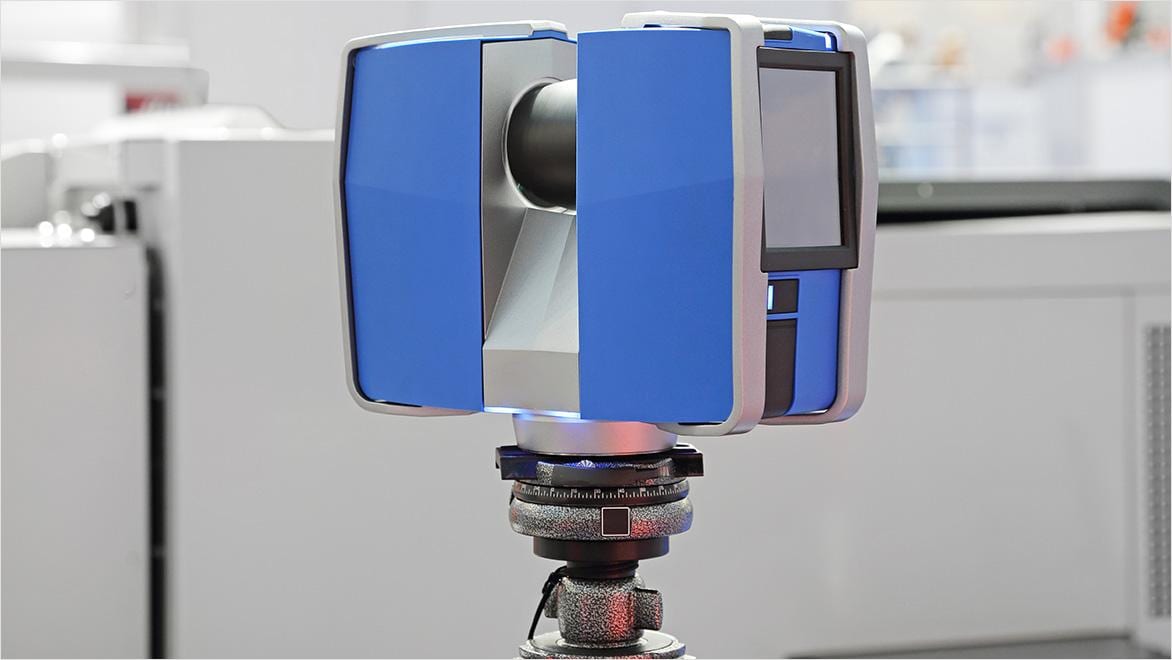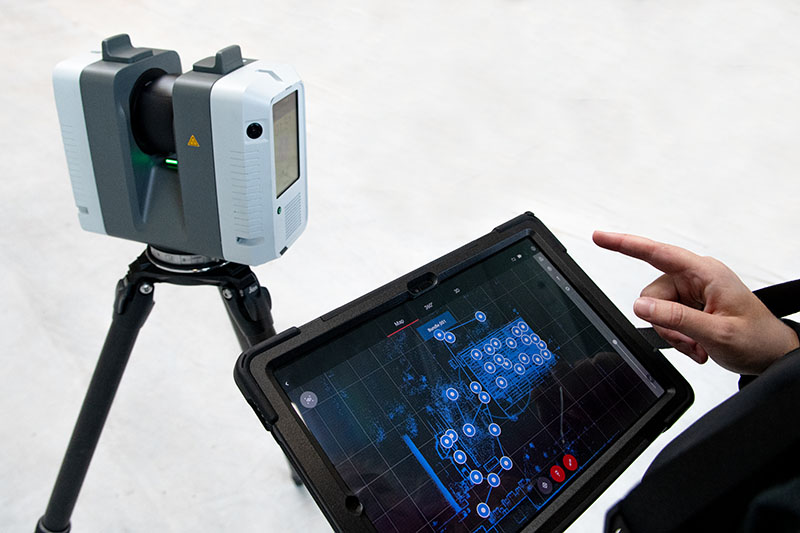Why 3D Scanning Improves Green Construction Practices
Just How 3D Laser Scanning Reinvents Architectural Style and Building Projects
3D laser scanning is transforming the landscape of architectural layout and building. This modern technology supplies unequaled accuracy in recording existing environments, which promotes better task planning and execution. It reduces errors while boosting efficiency in different phases of development. The ramifications for partnership among designers, designers, and various other stakeholders are considerable. These improvements open the door to brand-new layout possibilities and ingenious remedies. What lies ahead for this progressing technology?
The Fundamentals of 3D Laser Scanning Innovation
3D laser scanning innovation might appear facility, its core concepts are simple and transformative for architectural style. This innovation utilizes laser light beams to record precise measurements of physical frameworks, generating a thorough factor cloud that represents the scanned atmosphere. A laser scanner gives off fast pulses of light, gauging the moment it considers the light to return, which permits the estimation of distances with amazing accuracy.
The resulting factor cloud can be transformed right into a 3D design, supplying designers with vital aesthetic information. This version makes it possible for experts to examine and control design elements within their tasks, enabling ingenious services and enhanced visualization. By employing 3D laser scanning, architects can better understand the status quo of a website, making sure that brand-new layouts balance with their surroundings. This integration of technology right into architectural layout notes a considerable improvement, promoting imagination and precision in the area.

Enhancing Accuracy and Performance in Architectural Projects
As architectural jobs significantly demand precision and rate, 3D laser scanning arises as a critical device in enhancing both accuracy and effectiveness. This innovation records numerous information points in a brief timeframe, developing detailed and specific 3D versions of existing structures. The capacity to get accurate measurements reduces the risk of errors during the design phase, permitting designers to picture their jobs with unmatched quality.
The rapid data collection process minimizes the time spent on-site, making it possible for groups to concentrate on analysis and design renovations. With real-time information accessibility, modifications can be made swiftly, promoting an extra structured workflow. The integration of 3D laser scanning right into architectural practices not just enhances measurement precision however also enhances the total job timeline, assisting in quicker decision-making. In a market where accuracy is crucial, this technology stands as a transformative pressure, raising the criteria of architectural layout and building and construction jobs.
Streamlining Collaboration Amongst Stakeholders
While standard architectural processes usually entail fragmented communication amongst stakeholders, 3D laser scanning cultivates a more natural joint environment. By supplying exact, high-resolution data, this modern technology enables engineers, engineers, contractors, and customers to operate from a unified factor of reference. The in-depth visualizations created with laser scanning remove ambiguities and misinterpretations, ensuring that all celebrations have accessibility to the same information.
This openness enhances decision-making and urges timely feedback, as stakeholders can quickly envision design elements and spatial connections. Additionally, the assimilation of 3D scanning information right into Building Information Modeling (BIM) platforms even more simplifies cooperation, enabling real-time updates and modifications. Such seamless communication not only reduces disputes however likewise speeds up task timelines, as all stakeholders continue to be straightened throughout the design and building stages. Inevitably, 3D laser scanning changes traditional workflows into a much more collective and effective process, profiting all events involved.
Unlocking Creative Possibilities in Design
By making why not try this out it possible for engineers to imagine complicated intricate information and spatial partnerships, 3D laser scanning discloses innovative possibilities in design. This technology permits exact mapping of existing atmospheres, making it possible for engineers to check out innovative concepts that could have previously seemed impractical. With very exact information, designers can try out unique types and products, pressing the boundaries of typical style.
Additionally, the combination of 3D laser scanning into the design procedure promotes collaboration amongst multidisciplinary teams, urging the exchange of ideas and boosting imagination. The thorough visualizations created by this technology not only aid in recognizing possible style obstacles however likewise influence options that might not have actually been taken into consideration. As an outcome, engineers can produce much more engaging and dynamic areas that reverberate with users while satisfying useful requirements. Eventually, 3D laser scanning changes the building landscape, empowering developers to understand their visions with unprecedented precision and creative thinking.
The Future of 3D Laser Scanning in Architecture and Construction
The integration of 3D laser scanning right into building layout not just enhances imagination yet additionally sets the stage for its developing duty in the future of architecture and building. As modern technology advances, the precision and effectiveness of laser scanning will certainly remain to boost, enabling building contractors and engineers to develop more complex designs with precision - 3D check my source Scanning. Using this innovation in real-time information collection will certainly promote far better decision-making, reducing errors and improving operations
Future applications might consist of increased and digital truth integrations, permitting stakeholders to picture tasks in immersive settings. In enhancement, as sustainability comes to be a top priority, 3D laser scanning will sustain the growth of energy-efficient layouts by giving detailed insights into existing structures. As collaboration among various disciplines becomes more vital, the capability to share accurate 3D models will certainly cultivate technology and improve project outcomes. Inevitably, 3D laser scanning will certainly redefine standards in building style and construction practices.
Regularly Asked Concerns
What Is the Price of Carrying Out 3D Laser Scanning Innovation?

For how long Does a Typical 3D Laser Scanning Task Take?
A typical 3D laser scanning project can take anywhere from a couple of hours to numerous days, relying on variables such as the task's dimension, intricacy, and the degree of information needed for exact information capture.
What Kinds of Projects Advantage A Lot Of From 3D Laser Scanning?
3D laser scanning advantages numerous projects, especially massive building and constructions, historic restorations, and complex check my reference improvements. It boosts accuracy in measurements, reduces errors, and supplies thorough information crucial for reliable preparation and execution in architectural layout and building and construction.

Exist Details Software Application Programs Required for 3D Laser Scans?
Yes, details software application are vital for refining 3D laser scans. 3D Scanning. Popular alternatives consist of Autodesk ReCap, Faro Scene, and Leica Cyclone, each offering distinct functions customized for analyzing and imagining checked information effectively in various jobs
Exactly How Does 3D Laser Scanning Effect Environmental Sustainability in Building And Construction?
3D laser scanning boosts ecological sustainability in building and construction by minimizing material waste, making it possible for accurate measurements, and promoting efficient resource use. This technology enables for much better planning, decreasing the ecological footprint of construction projects via boosted precision and performance.
3D laser scanning is changing the landscape of architectural style and building. 3D laser scanning modern technology might appear complicated, its core principles are transformative and simple for architectural design. By enabling architects to envision intricate spatial partnerships and complex information, 3D laser scanning exposes innovative possibilities in design. The integration of 3D laser scanning into the layout procedure promotes partnership amongst multidisciplinary groups, encouraging the exchange of ideas and boosting creative thinking. The assimilation of 3D laser scanning right into architectural design not only enhances creative thinking however also sets the stage for its advancing function in the future of architecture and building and construction.